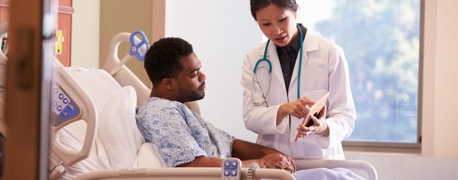The Evidence That Can Strengthen Your Personal Injury Lawsuit

After a tragic accident or life-changing injury, most people are focused on recovery—on regaining their health, supporting their family, and trying to get life back on track. But if someone else's negligence caused the incident that led to your injury, there’s another crucial consideration: how to hold them accountable.
In any personal injury claim or lawsuit, the strength of your case comes down to evidence. The law doesn’t rely on emotion or assumptions. It requires proof.
Gathering the right kinds of evidence can mean the difference between a vague claim and a compelling case. While no piece of evidence guarantees a successful outcome, the right documentation can help tell the full story of what happened, how it happened, and how it has impacted your life.
Medical Records: The Cornerstone of a Personal Injury Claim
When it comes to proving your injuries—their severity, their impact, and the treatment they require—your medical records are often the most important source of evidence. They show everything from the nature and extent of your injuries to the care you received and the connection between your injuries and the incident.
A solid personal injury case relies heavily on detailed medical records, such as:
- Hospital and emergency room records
- Diagnostic imaging (X-rays, MRIs, CT scans)
- Surgical reports
- Physical therapy and rehabilitation records
- Prescription history
- Medical bills and insurance summaries
This documentation not only helps establish the severity of your injuries but also plays a key role in determining the value of your claim. If treatment is ongoing or your injuries are permanent, your medical records may also be used to support future damages, such as long-term care needs or lost earning capacity.
Incident Reports & Photographs: Establishing What Happened
Evidence that speaks to how the accident occurred is just as critical as medical evidence. This kind of evidence—things like official police or accident report, as well as documentation gathered at the scene—helps tell the story of what happened. It can clearly establish causation, or the connection between the defendant’s conduct and your injuries.
Some of the most helpful types of incident-related evidence include:
- Police or accident reports
- Photographs of the accident scene
- Surveillance video footage (when available)
- Photos of damaged vehicles, equipment, or personal items
- Pictures of visible injuries
- Property maintenance records (in premises liability cases)
In many cases, time is the enemy of this type of evidence. Photographs get deleted. Surveillance footage is erased. Conditions at the scene change. The sooner evidence is preserved, the better the chances of presenting a clear, detailed narrative of the event.
Witness Statements: Third-Party Accounts to Support Your Version of Events
Eyewitnesses can help corroborate your account of the accident, especially when the at-fault party disputes liability. Statements from people who saw the incident unfold can help answer key questions, like, Who had the right of way? What actions (or inactions) led to the accident? Was anyone distracted or acting recklessly?
If you're able to speak with witnesses after an accident, gather their contact information right away. Their testimony could become vital if the case proceeds to trial or if negotiations stall.
Financial Records: Demonstrating the Full Cost of the Injury
To recover compensation in a personal injury claim, you have to show more than just physical harm; you also need to document your financial losses. These may include both out-of-pocket expenses and the long-term economic consequences of the injury.
Useful financial evidence includes:
- Medical bills (co-pays, deductibles, prescriptions, therapy, equipment)
- Receipts for injury-related costs (transportation to appointments, hotel stays, home modifications)
- Pay stubs or direct deposit records to show lost wages
- Letters or documentation from your employer regarding missed work
- Tax returns to establish earning history
- Property repair or replacement costs
This type of evidence helps paint a complete picture of how the injury has affected your day-to-day life, both immediately and in the long term.
Expert Witnesses: Translating Complex Issues for the Court
In more complicated cases, such as those involving catastrophic injuries or shared fault, expert witnesses are often essential. These are individuals with specialized knowledge, such as doctors, accident reconstructionists, or economists, who can help clarify technical or disputed aspects of a case.
For example:
- A medical expert can explain why your injury is expected to cause a significant, lifelong disability.
- An accident reconstruction expert can analyze skid marks, vehicle damage, and road conditions to show how a crash occurred.
- A vocational expert can testify about how your injuries affect your ability to work in your chosen field.
- An economist can calculate the value of your future lost earnings or ongoing medical expenses.
Expert witness testimony must be based on reliable methodology and relevant data, and in most cases, it must meet legal standards for admissibility. But when presented effectively, expert witnesses can provide insight that helps jurors understand why your claim is valid and what the long-term consequences really look like.
How Personal Injury Attorneys Build a Case Around Evidence
Even if you know what evidence is important, collecting and organizing it in a way that makes your case persuasive takes experience. That’s where a personal injury lawyer comes in. Your attorney can work with investigators, forensic experts, and medical professionals to make sure every detail is accounted for, and every piece of evidence is preserved properly.
Most people don’t come into this process with a file full of evidence ready to go. That’s our job—to gather critical evidence, protect it, and, most importantly, use it effectively to prove your case. Whether we’re negotiating with insurance companies or presenting your case to a jury, everything comes back to the facts and the story those facts tell.
Evidence Doesn’t Just Support Your Case. It Tells Your Story.
At its core, every personal injury lawsuit is about accountability. But to hold someone accountable, you need to build a case that stands up to scrutiny. Strong, well-documented evidence won’t guarantee a specific result, but it can help ensure your voice is heard, your suffering is recognized, and your future is protected.
If you’ve been injured and aren’t sure where to start, we’re here to help. Arnold & Itkin has recovered billions of dollars for clients nationwide, and we know what it takes to build cases that demand justice. No matter what.
- Categories


